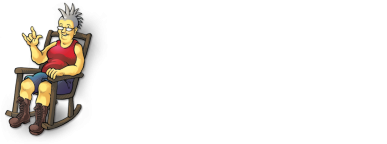Another double-live set, siphoned from the same source as "Paul Butterfield Live," gives us chills
For many children of the late ‘70s and ’80s, our first exposure to the blues came when Chicagoans Dan Akroyd and John Belushi donned ill-fitting suits and Ray-Bans and sang like shit. But “Jake and Elwood Blues” (the comedy teams Noms-de-guerre) were diehard music fans, and they channeled their popularity into giving some mighty fine original artists a platform to reach us kids about good tuneage.
Paul Butterfield was one of the legends that directly influenced the Blues Brothers’ schtick. The harmonica player and bandleader’s street smarts and love for the blues landed him on hardscrabble South Side blues stages in the early 1960s, places like Smitty’s and Pepper’s where players had to kick out the jams or get booed off the stage.
Butterfield’s band was interracial — bassist Jerome Arnold and drummer Sam Lay from Howlin’ Wolf’s band were in the original lineup — which now is par for the course but at the time was a radical idea. Original guitarist Mike Bloomfield, better known as the guitarist on Dylan’s Highway 61 Revisited, was also foundational to hits like “Born in Chicago.”
This double LP, recorded in 1970 as Butterfield’s star was mostly dimmed, features a later-model Butterfield Blues Band lineup in which only the bandleader was left from the debut. It follows last year’s CD release of this concert, which was recorded for The Singer Sewing Machine Company, who for a time sold records in their New York stores as it struggled to reach a new generation of home haberdashers. Four sides, only nine tracks, from the same tour that produced 1970’s Paul Butterfield Live, another double-live set.
Although blues purists at the time felt “Butter,” as he was called, had leaned too far away from blues and into jazz and soul, almost five decades on, you can hear what he was doing: Adding a tight horn section like the soul and blues bands of the day, and showcasing gifted guitarist Ralph Walsh, whose playing evokes equal parts dirty Chicago blues and Duane Allman simmer. Saxman David Sanborn — later a member of the SNL house band in 1975 when Belushi was on the cast — anchors the horn section. The blues was a bit less frantic than the early records, and more suited for the post-Woodstock era of classic rock. It’s also a bit more urbane: This band at times throws down funk-blues a la B.B. King and Albert King’s 1970s material, with a few right turns into jam-band land.
Clearly, they weren’t doing three-minute renditions of Butter’s earlier hits. In context, what the Butterfield Blues Band had evolved into makes perfect sense; at the time, Bloomfield’s Electric Flag, Blood Sweat and Tears and Chicago all were finding success with horns and incorporating jazz influence to electric rock and blues. Fans of the crazy-awesome, acid-inspired “East-West,” the title cut of the 1966 second Butterfield Blues Band album that jams to Indian raga, will dig this set — especially the Middle-Eastern tinged “So Far So Good,” the set’s climax featuring Sanborn jamming with more speed and energy than anyone who’s heard some of his more mellow radio tunes would imagine him capable.
This Butterfield Blues Band incarnation was likely a stone in the Blues Brothers foundation — blues at its heart, with large ladles of soul stirred in. The band stretches out Big Walter’s “Everything’s Gonna Be Alright” past eight minutes and Charles Brown’s “Driftin’ Blues” almost 15. Then there’s the rendition of “The Boxer,” which takes a left turn into Allmans territory with drummer Dennis Whitted taking an extended solo for the ages that probably furrowed brows of the audience members coming to hear “Born in Chicago” and instead getting a pretty good Jaimoe. “Stuck In The Countryside” is in-your-face funk right out of the Ike Turner playbook.
The sound is fantastic, which isn’t always easy to come by in this vinyl renaissance where a thousand tiny labels will release rotted live tape of pretty much any formerly popular musician, whether it sucks or not (witness John Mayall’s recent issue of two double-LPs from the short-lived Bluesbreakers lineup including Peter Green), but the sonics on this record, will make you feel like you’re sitting in the front row witnessing Butterfield in his prime, commanding both his harp and his eight-man band. It’s also different enough from Paul Butterfield Live that if you happen to know that double record and like it, Live New York 1970 will give you wonderful chills of finding an undiscovered treasure.
Butterfield was a monster on the harmonica who, despite his best efforts to evolve Chicago blues and his own art, got passed by and eventually dumped by Elektra. For the night this concert was recorded, however, he and his band threw down straight fire, shedding the kind light even fancy Ray Bans can hardly dim.




